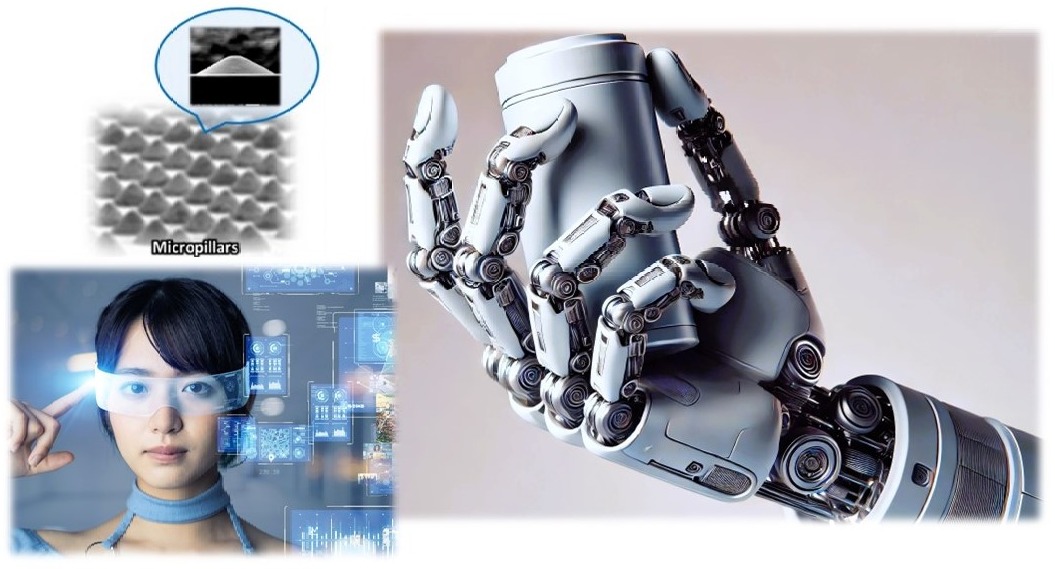Intuitive and Sensitive Capacitive Force Sensing Technology

KEY INFORMATION
Infocomm - Robotics & Automation
TECHNOLOGY OVERVIEW
Force sensing is widely used across various applications. In recent years, the demand for automation and labour-saving solutions has rapidly surged, driving the growth of markets for human-like robotic hand replacements. Additionally, extended reality (XR) and gaming controllers are striving to enhance the immersion through pressure sensing. As a result, there is an increasing need for force sensing technologies that closely mimic human sensation. The primary methods for force detection rely on capacitive and resistive sensors. These sensors measure force by detecting changes in capacitance or resistance values. However, they face challenges like low surface resolution and nonlinear responses to varying load ranges, leading to a perception that differs from natural human touch / operation.
To address these challenges, the technology owner has developed an advanced capacitive force-sensing technology that utilizes micro-pillars (micro-protrusions) which are just tens of microns in height. This technology accurately detects changes in capacitance at low load ranges by leveraging micro-pillars. These micron-scale structures are formed using conductive rubber through an original micro-molding process. When configured in a grid layout, the technology ensures high linearity and surface resolution down to a single digital pitch, enabling force sensing that closely replicates human perception.
The technology owner is keen to collaborate with industrial partners across various sectors, such as ICT manufacturers, robotics companies, and manufacturers of controller and electronic instruments, to explore potential applications.
TECHNOLOGY FEATURES & SPECIFICATIONS
This capacitive force-sensing technology has the following key features:
- Force Sensing via Micro-pillars: utilizes micro-protrusions made from conductive rubber as electrodes
- Customisable: sensitivity characteristics, including linearity, load range, and capacitive response to force, can be customized to suit specific applications by adjusting the design and hardness of the micro-pillars
- High Sensitivity: able to detect low load range with high linearity by measuring the surface area change of electrode
- Excellent Durability: due to the use the elastic deformation of conductive rubber for force sensing
- Versatile: able to detect individual force inputs with a single sensor and pressure distribution with a grid layout module
Features as a Force-Sensing Input Device:
- Compact Size: achieved even with the integration of a tactile feedback mechanism
- Integrated Solution: eliminate the need of combining an additional haptics device
Features as a Pressure Distribution Sensor:
- High-Resolution and Sensitivity:
- Provides detection capabilities similar to human touch / operation
- Precisely sense the shape and orientation of tiny objects
- Able to detect how an objects is behaving by tracking the pressure distribution change
POTENTIAL APPLICATIONS
The technology can significantly enhance the user interface across a wide range of applications as an input device. Potential applications include, but are not limited to:
- Smartphones, Smart watches, XR systems, other information and communication technology (ICT) devices
- Game controllers
- Electronic musical instruments
- Digital cameras
Use case as a sensor in both industrial and commercial products, such as:
- Human-like robotic hands
- Communication robots
- Robotic manipulators
Unique Value Proposition
- Characteristics of this device can be customized for various applications, particularly those involving human interaction or robotic pressure sensing
- Offers an intuitive and highly sensitive force-sensing solution with high output linearity and narrow-pitch detection
- An operation feeling with its linear output, closely matches human perception, making it ideal as an input device
- Ability to detect forces in low load ranges with high linearity and high surface resolution makes the sensing experience very close to human sensation
